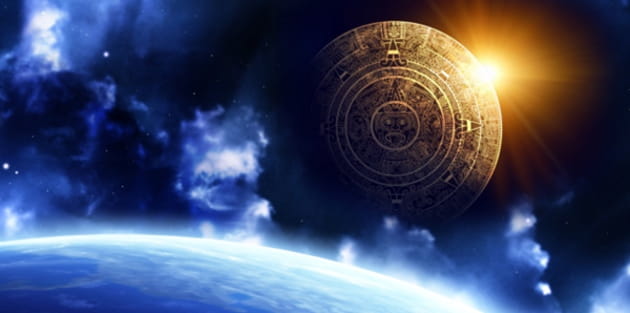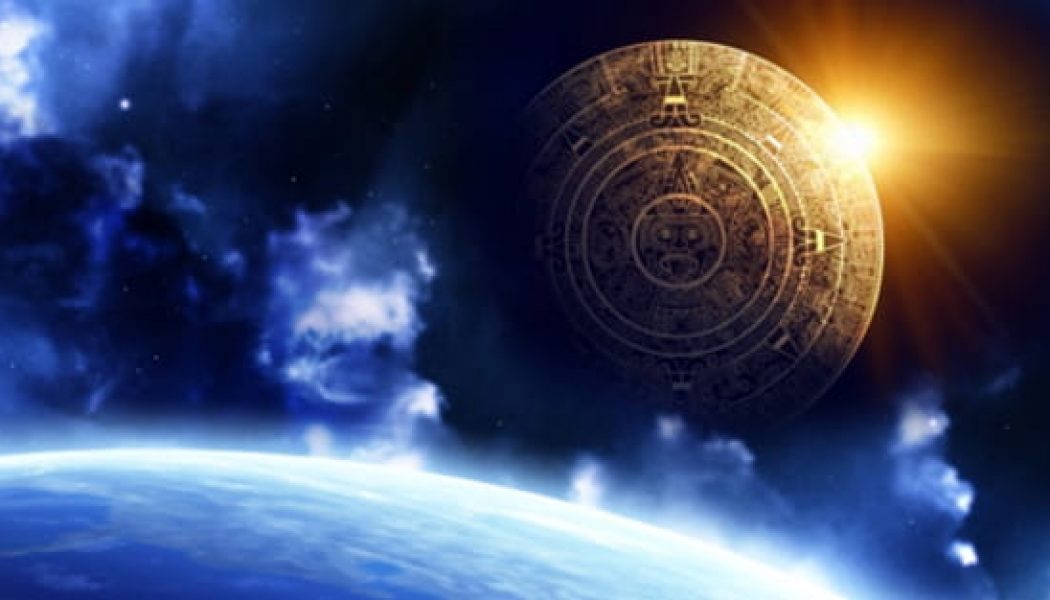
With echoes from REM’s “The End of the World as We Know It” reverberating through our cultural psyche, the Mayan apocalypse – predicted for December 21 – is looming large.
According to the Mesoamerican Long Count calendar, December 21, 2012, is the end date of a 5,125-year-long cycle.
What might be called a “New Age” interpretation is that this date will inaugurate a new era marked by massive spiritual transformation.
Or it will bring the catastrophic end of the world.
As in the arrival of the next solar maximum, Earth being swallowed by a black hole at the center of the galaxy, or the collision with another planet.
Sound far-fetched?
Not to a lot of people.
Consider the reports coming from across russia’s nine time zones. Inmates in a women’s prison near the Chinese border are said to have experienced a “collective mass psychosis” so intense that their wardens summoned a priest to calm them.
In a factory town east of Moscow, panicked citizens stripped shelves of matches, kerosene, sugar and candles.
A huge Mayan-style archway is being built – out of ice – on Karl Marx Street in Chelyabinsk in the south.
Russia’s government decided to put an end to the doomsday talk by having its minister of emergency situations say that he had access to “methods of monitoring what is occurring on the planet Earth,” and that the world was not going to end in December.
Before you laugh, the U.S. government just did the same thing.
In a blog post on USA.gov, it was announced that the “world will not end on December 21, 2012, or any day in 2012.” Why the declaration? Apparently NASA officials are getting messages from children as young as 11 who say they are ill and/or contemplating suicide because of the coming doomsday.
So how are we to think Christianly about this?
First, let’s just think. The most rudimentary understandings of the Mayans reveal that they did not view time as linear, but cyclical. So whatever they meant to forecast for December 21 was simply the end of one cycle and the beginning of another. In fact, there is not a concept of “apocalypse” in Mayan culture at all.
Second, the date itself has been debunked. An excavation of a Mayan timekeepers’ workroom in Guatemala recently revealed calendars that destroy any notion that the Mayans predicted the end of the world in 2012.
So what is keeping it alive?
Many speculate it is little more than profit. It sells books, has created a booming tourism industry in Mexico, and is fostering a demand for survival kits, insurance policies and reserved seating in “doomsday-proof” bunkers. Further, as cultural historian Paul Boyer notes, the more people feel marginalized or alienated from society, the more apocalyptic ideas will find fertile soil.
But now to the thinking “Christianly” part.
The Christian view of time is linear. The Bible paints a clear picture of a beginning, and an end. Many Christians believe that end is imminent. A 2011 Pew Center poll found that 41 percent of Americans believe the rapture will occur before 2050.
It doesn’t matter.
When the end comes, the Bible doesn’t suggest fear or anxiety, but rather spiritual readiness and hope.
As for spiritual readiness, Jesus said that the most important matter was to keep watch and be prepared, ending his “little apocalypse” teaching in Matthew 24:1 with the parable of the 10 virgins, the parable of the talents, and the parable of the sheep and the goats (Matthew 25:1).
And as for hope, the Psalmist writes, “God is our refuge and strength, an ever-present help in trouble. Therefore we will not fear, though the earth give way and the mountains fall into the heart of the sea, though its waters roar and foam and the mountains quake with their surging” (Psalms 46:1, NIV).
So yes, the world will end. The real question is whether it will be met with faith in the living God. As the late Chuck Colson wrote, “Christians know that God is working out His purposes in history, and that faith removes all anxieties.”
Even those sparked by obscure and misunderstood ancient prophecies.
James Emery White
Sources
“2012 Phenomenon,” Wikipedia, read online.
Synthia Andrews and Colin Andrews, The Complete Idiot’s Guide to 2012.
“U.S. Government: Apocalypse Not Destroying The World In 2012, So Stop Scaring The Kids,” Nick Wing, The Huffington Post, December 3, 2012, read online.
“In Panicky Russia, It’s Official: The End Isn’t Near,” Ellen Barry, The New York Times, Sunday, December 2, 2012, p. 1, read online.
“Mayan calendar room found,” Brian Vastag, The Washington Post, Friday, May 21, 2012, p. 8A.
“The Mayan apocalypse,” The Week, February 10, 2012.
“2012 or Bust,” Chuck Colson, Breakpoint, November 3, 2009.
Editor’s Note
James Emery White is the founding and senior pastor of Mecklenburg Community Church in Charlotte, N.C., and the ranked adjunctive professor of theology and culture at Gordon-Conwell Theological Seminary, which he also served as their fourth president. His newly released book is The Church in an Age of Crisis: 25 New Realities Facing Christianity (Baker Press). To enjoy a free subscription to the Church and Culture blog, log on to www.churchandculture.org, where you can post your comments on this blog, view past blogs in our archive and read the latest church and culture news from around the world. Follow Dr. White on Twitter @jamesemerywhite.









